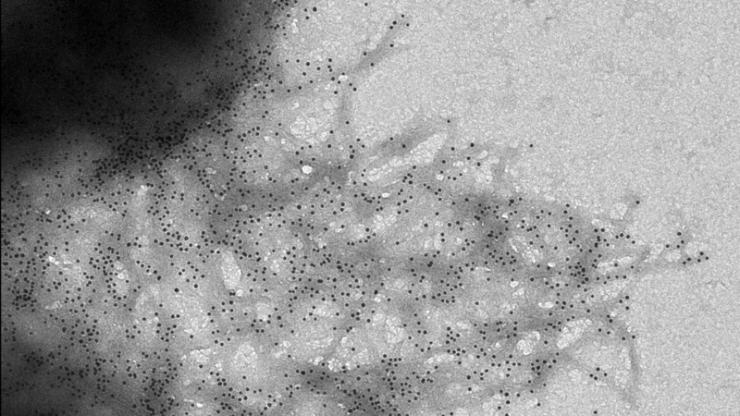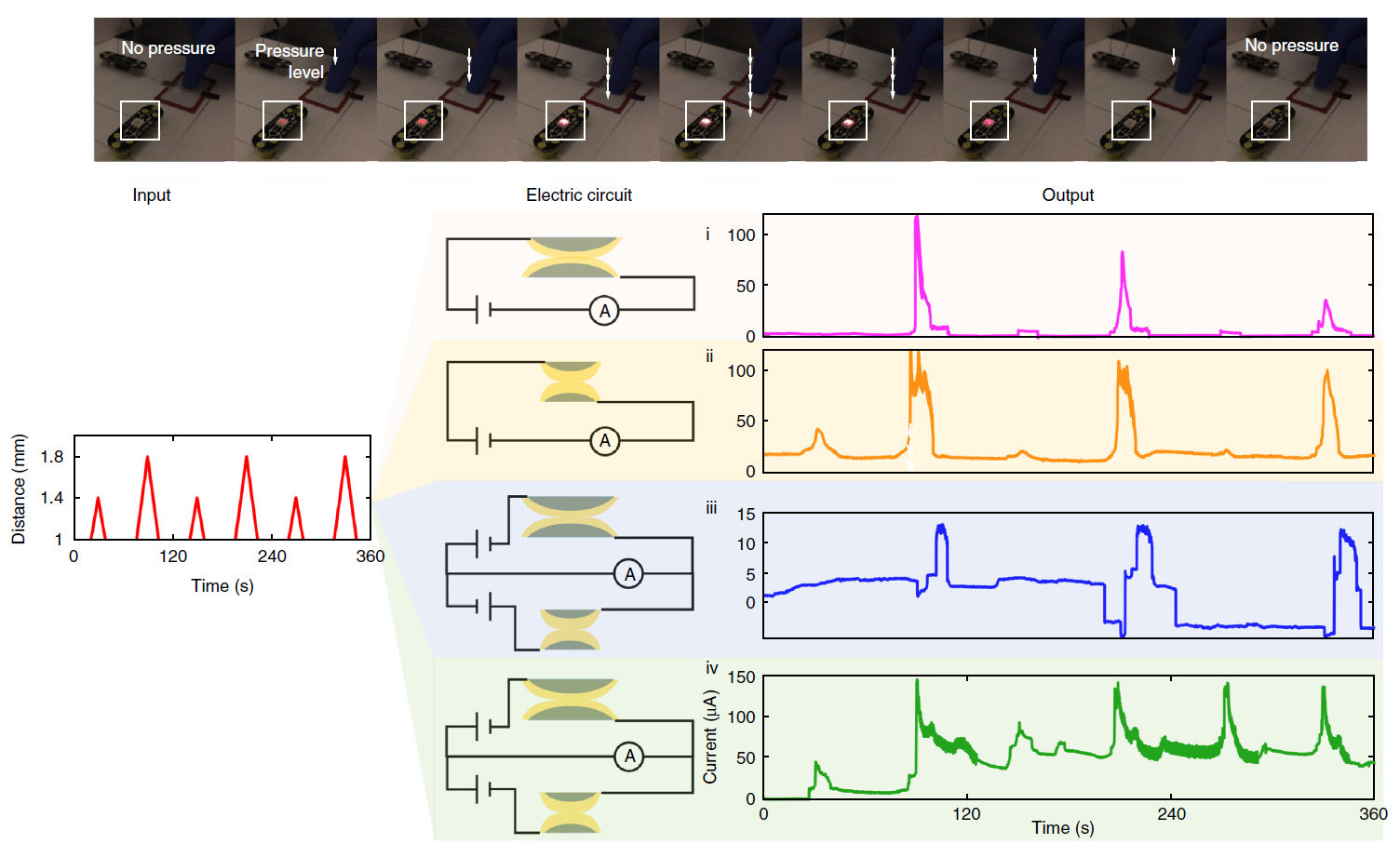A new GMO bacterium is genetically programmed to assemble a touchpad.

Black dots are gold nanoparticles attracted to pressure-sensitive domes that are built by genetically modified bacteria.
In nature, microstructured materials created from scratch are often found. They combine organic and inorganic, while having improved physical qualities. For example, mollusk shells are multi-layer calcium carbonate microstructures with a small amount of organic matter. This material is about 1000 times stronger than regular calcium carbonate. Our own bones are also a mixture of organic collagen and inorganic minerals. Unlike conventional methods of physical and chemical production, biological assembly is environmentally friendly and relies on self-assembly components.
Modern advances in synthetic biology and the production of biomaterials already allow programming of self-assembly of proteins, peptides, and DNA chains. Now came the turn of the electronics. Scientists have designed GMO bacteria, colonies of which form an electronic pressure sensor (touchpad).
One of the ways to create a material that combines organic and inorganic is the genetic modification of a bacterium to control the creation of a biofilm on which the inorganic components are assembled.
In 2014, the first experiment was carried out on the self-assembly of amyloid fibrils from E. coli bacteria cells , resulting in a conductive biofilm with an electrode that was controlled from the outside as an electronic switch. But that method had drawbacks, for example, a colony of bacteria had to be pre-grown on a specially structured 2D surface. Now bioengineers from Duke University (USA) used the previous developments in 2014 and proposed a new method , devoid of these shortcomings. They say that a single cell, that is, a single bacterium, is enough for growing a device. After breeding and receiving the appropriate command, a colony of bacteria will independently form the necessary 3D structures, which will attract gold particles to themselves in the right places — and finally form a device of a given functionality (in this case, a pressure sensor).

Production of programmable material using GMO bacteria forming a pattern. (a) The gene scheme consists of mutated T7 polymerase RNA (T7RNAP), which activates its own expression as well as the expression of LuxR and LuxI proteins. LuxI protein mediates the synthesis of AHL, which promotes the expression of T7 lysozyme, CsgA protein, and mCherry fluorophore through LuxR activation. The scheme is activated by the exogenous addition of IPTG . (b) Bacteria with curli-villi can form self-organizing curli-patterns in each colony, which serve as a framework for the assembly of inorganic materials. (c) Touchpad, which records and converts local pressure changes. The dome shape is a microstructured material created by a colony of bacteria. The orange lines correspond to the conductive wires, and the two blue planes to the supporting surfaces.
As shown in the diagram above, the bacteria fulfill the laid down instructions (program), as a result of which a dome-shaped structure is created. The size of the dome can be controlled by changing the size of the colony. The dome attracts to itself a gold nanoparticle. A conductive shell is formed from them - a touchpad contact.

Reliable signal processing by bacteriological pressure sensors. Shows the intensity of the brightness of the LED, which glows depending on the force of pressure on the sensor
The performance of the touchpad is tested in the laboratory. He normally registers not only the fact of pressure, but also the force of pressure.
“This technology allows us to grow a functional unit from a single cell,” said Lingchong You, associate professor of engineering at Duke University. “Fundamentally, this is no different from programming a cell to grow into a tree.”
To the professor's words, one can add that some living cells are programmed to grow into a person, so that by means of gene modification one can create a variety of systems from a single cell if the cell is properly programmed and left to multiply in a nutrient medium.
Demonstration of the work of the touchpad collected by GMO bacteria:
The scientific article was published on October 9, 2017 in the journal Nature Biotechnology (doi: 10.1038 / nbt.3978, pdf ).
All Articles